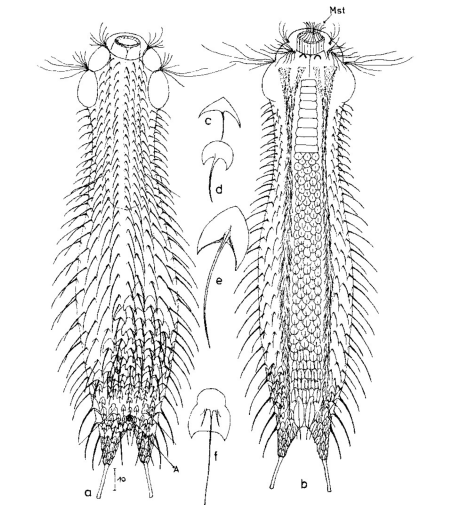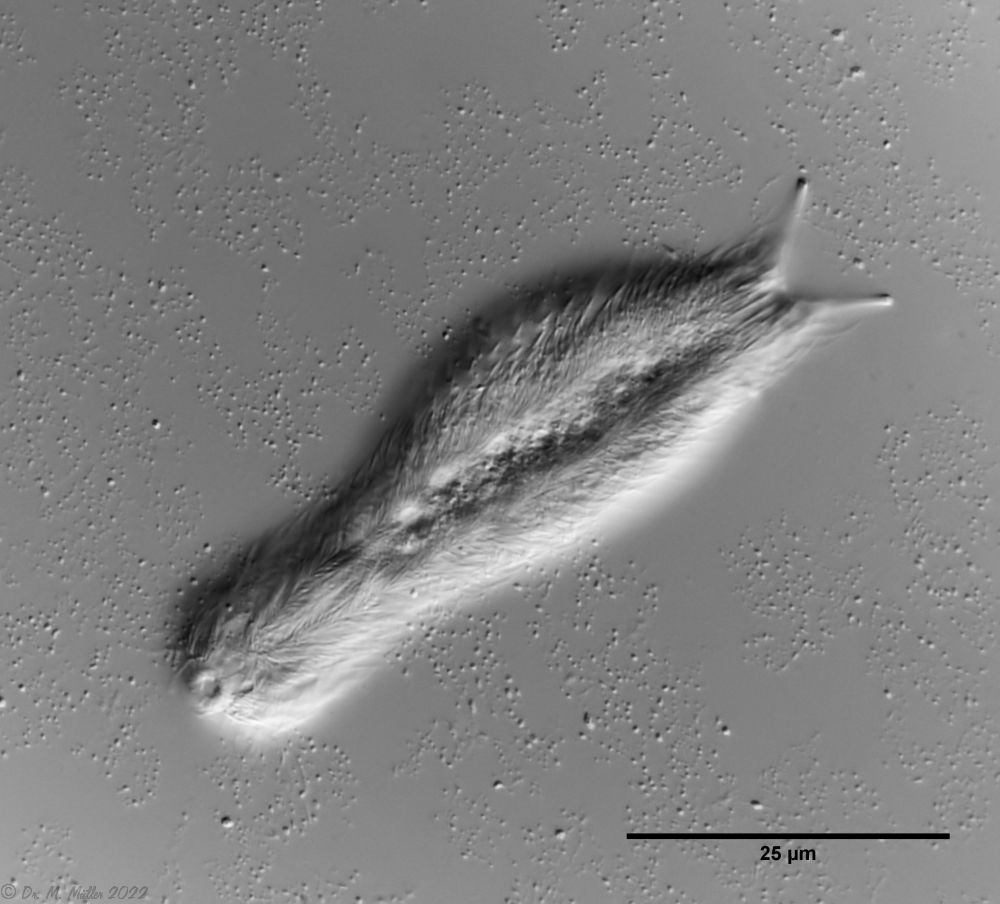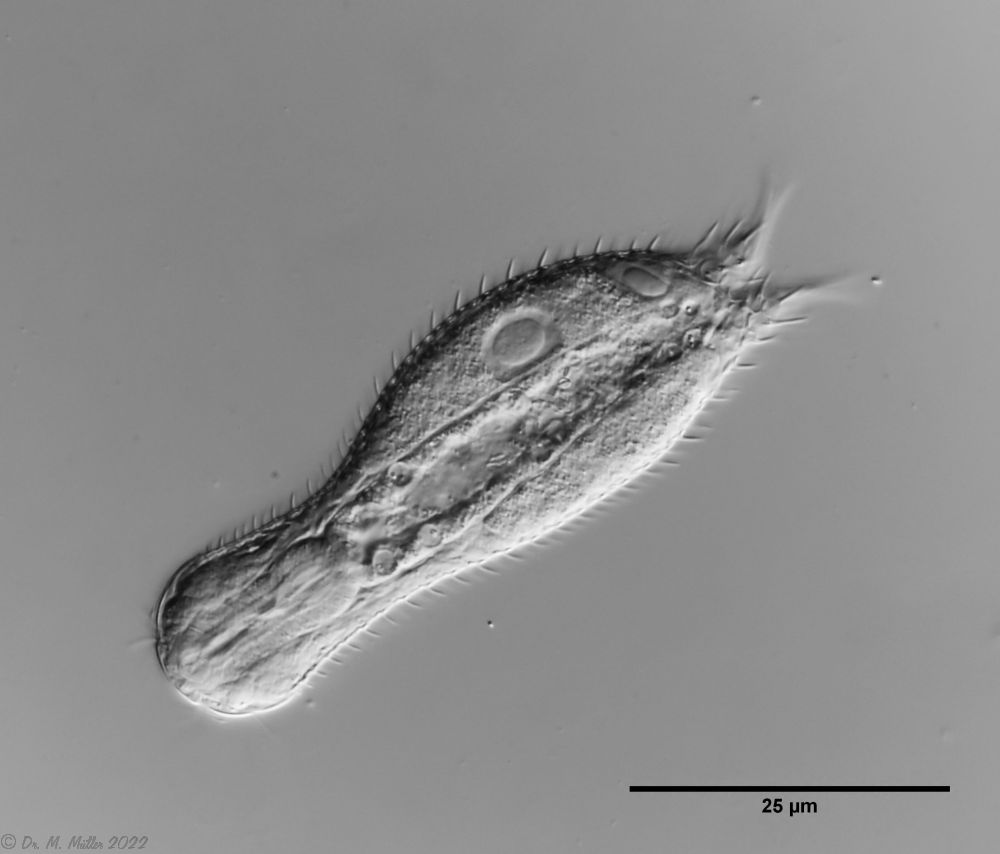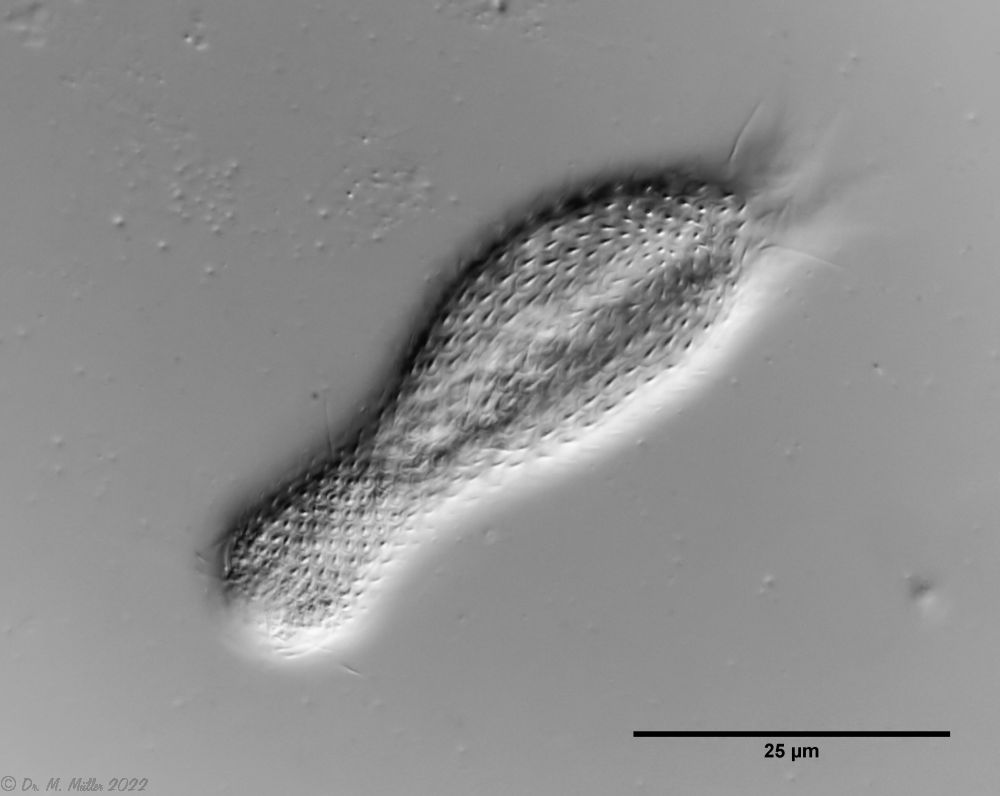Chaetonotus (C. ) multispinosus

85 µm - 150 µm
Width:
31 µm - 43 µm
Width of the head ( five-lobed ):
28 µm - 32 µm
Width of the neck:
27 µm - 28 µm
Length of the furca:
14 µm - 16 µm
Adhessive tubes:
20% of furca
Pharyx ( cylindrical, barrel-shaped ):
31 µm - 39 µm
Diameter of the mouth ( round ):
unknown
Dorsal scales:
17-19 rows of 38-40 circular scales each with distal cutout and short and simple spines
Ventral scales:
2-3 pairs of elongated, keeled terminal plates; 5-7 rows of small, round keel scales
Oecology:
very europhilous species; standing and flowing waters; moor; common
Similar species:
well-defined due to stocky shape and bare toes
Particularities:
Bare toes; insufficiently described
The small and common gastrotrich Chaetonotus (Ch.) multispinosus is characterized by its short-spined, roundish scales, which are cut out at the posterior end:
 Ch multispinosus: ventral
Ch multispinosus: ventral
The short spines that give the species its name can be seen in cross-section. The short, club-shaped pharynx is very typical:
 Ch multispinosus: cross section
Ch multispinosus: cross section
The ventral intermediate field is covered with a few rows of roundish, keeled scales. The posterior end is formed by two larger, short spiny plates, which are bordered by two pairs of small, also short spiny keel scales:
 Ch multispinosus: dorsal
Ch multispinosus: dorsal